Barrel-aged beer, delightful in its complexity, is an art and science many enthusiasts are keen to understand. Did you know this brewing technique links directly back to Celtic history? This article explores the intricacies of barrel-aging and the various specialty methods employed in brewing.
Dive into a rich blend of tradition and innovation that will have you pouring for more!
Key Takeaways
- Barrel – aged beer is created by using wooden barrels, like oak, which add unique flavors and characteristics to the brew.
- Different types of barrels, such as oak or spirit barrels, offer distinct flavors and aromas to barrel-aged beers.
- The process of barrel aging involves selecting the right barrel, preparing it properly, filling it with beer after primary fermentation, and allowing the beer to age and develop complex flavors over time.
- Toasted barrels enhance sweetness in the beer while charred barrels add a smoky depth. Each type of barrel brings its own unique flavor profile to the brew.
- Solera brewing is an artful technique that blends different batches of aged beer over time to create complex flavors in barrel-aged beers.
The Art and Science of Barrel-Aged Beer

Barrels play a crucial role in barrel-aged beer, as they are more than just containers – they act as ingredients that impart unique flavors and characteristics to the brew.
Understanding the importance of barrels as ingredients
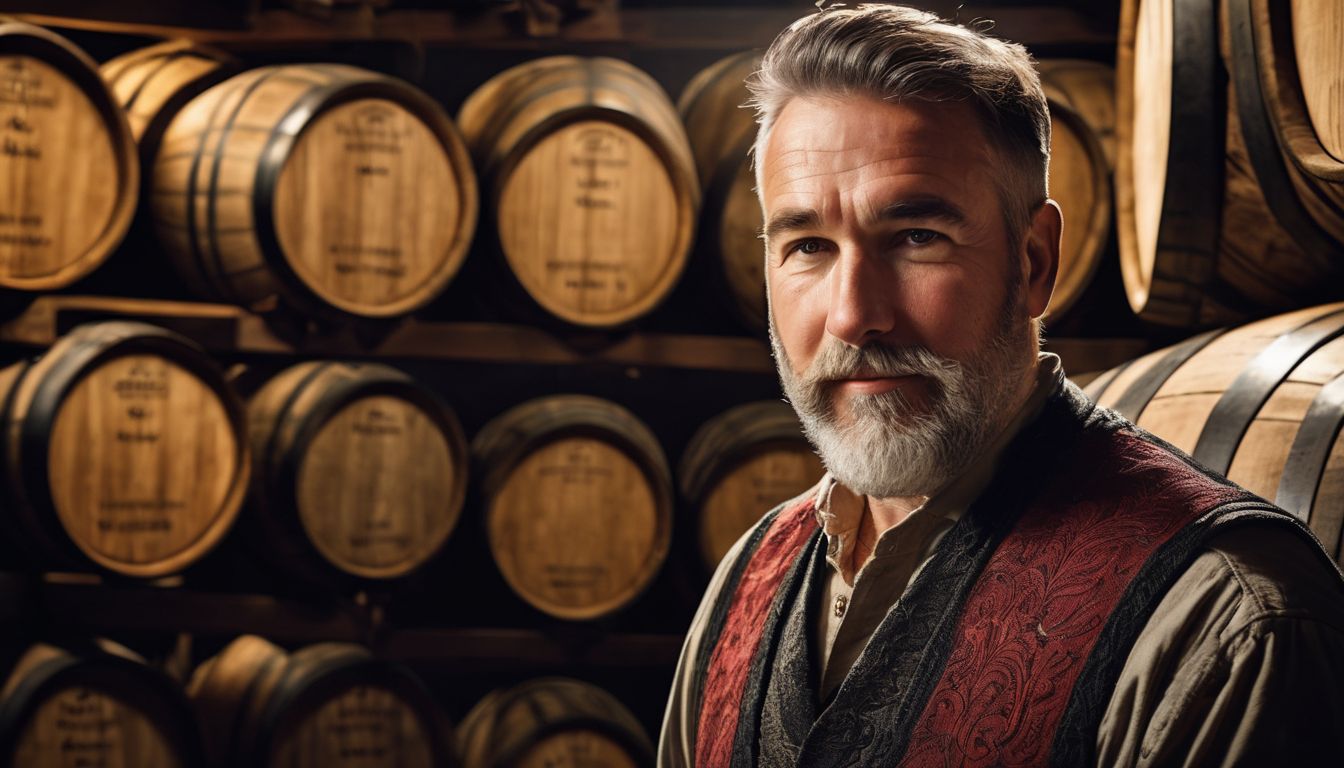
Barrels play a big role in the taste of beer. The type of wood used in the barrel changes how your beer will taste. Oak is the top choice for brewing beer because it is strong, yet bendable.
It also adds a unique flavour to the brew. Some barrels were first used for whisky or wine before being used for beer. These barrels can make your beer taste like those drinks too! Plus, the slow air that gets into wooden barrels makes even more new flavours in your drink! This is what makes barrel-aged beers so special and different from one another.
The kind of barrel you use really does matter when making this type of craft beer!
The choice of oak wood for barrel aging
Choosing the right oak wood for barrel aging is a crucial decision in the brewing process. Oak barrels are selected because they provide unique flavors, aromas, and characteristics to the beer.
The type of oak used can greatly influence the final product, adding notes of vanilla, smoke, spice, mocha, fruit, or even coconut. Brewers often opt for spirit barrels that have previously aged spirits like whisky or bourbon to infuse additional complexity into their beers.
The careful selection of oak wood is an important step in creating exceptional barrel-aged beers that are loved by beer enthusiasts around the world.
Exploring the nuances between different types of barrels

Barrel aging beer is as much an art as it is a science, and the choice of barrel plays a crucial role in shaping the flavors and aromas of the final product. Different types of barrels, such as oak or spirit barrels, offer distinct characteristics to the beer.
Oak barrels impart flavors like vanilla, coconut, and spice, while spirit barrels add notes of mocha and fruit. The selection of the right barrel is essential to achieve the desired flavor profile in barrel-aged beers.
Craft brewers carefully consider these nuances to create unique and complex brews that delight beer enthusiasts worldwide.
The intellectual curiosity behind barrel aging

Barrel aging in brewing goes beyond just a simple technique. It’s an intriguing process that sparks intellectual curiosity among brewers and beer enthusiasts alike. The idea of using wooden barrels to age beer is rooted in history, with influences from the whisky industry.
Brewers are fascinated by the impact that barrels have on the flavors, aromas, and characteristics of their brews. They explore different types of wood, such as oak, which can infuse the beer with notes of vanilla, smoke, spice, mocha, fruit, or even coconut.
This experimentation leads to unique and complex flavors that make barrel-aged beers so captivating. It’s this combination of science and artistry that drives the intellectual curiosity behind barrel aging in brewing.
Barrel Aging Techniques in Brewing
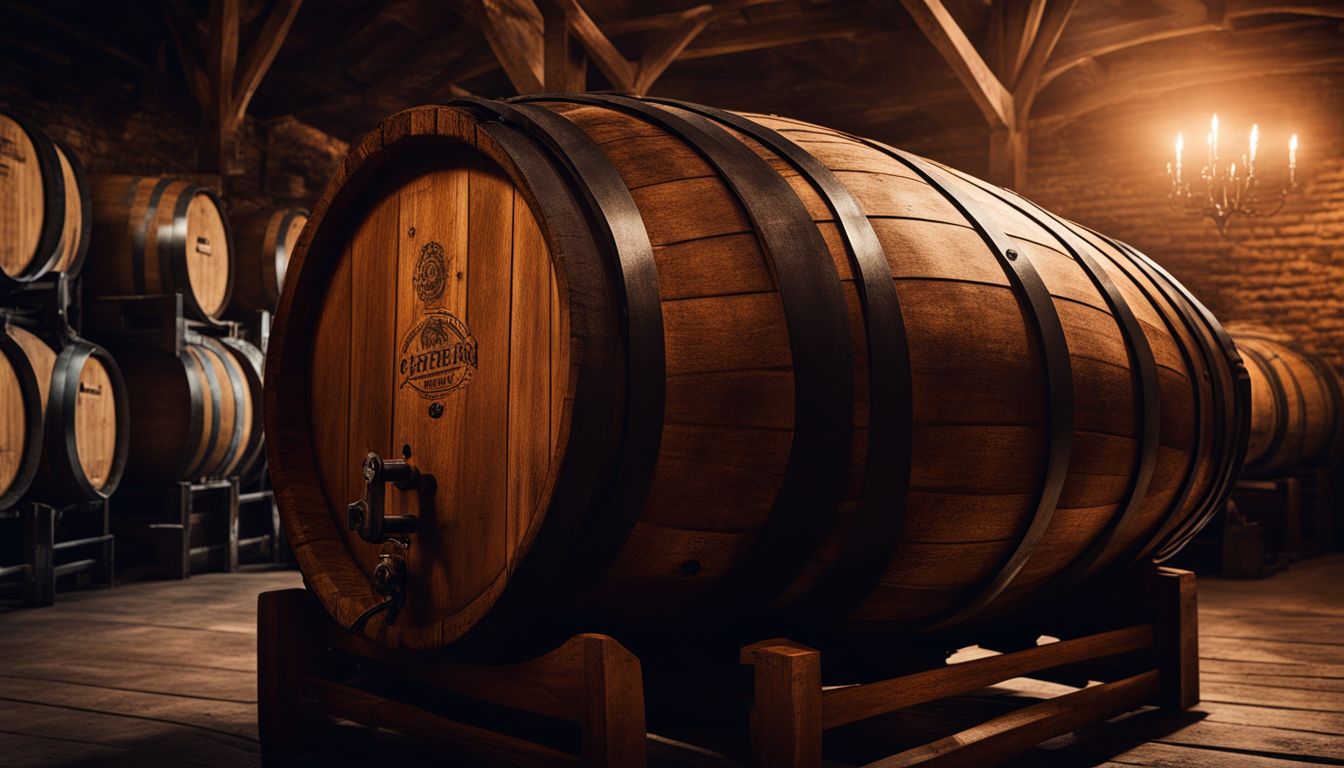
Explore the process of barrel aging beer and discover the different types of barrels used, from toasted to charred, to create unique flavors and aromas in your favorite brews.
The process of barrel aging beer
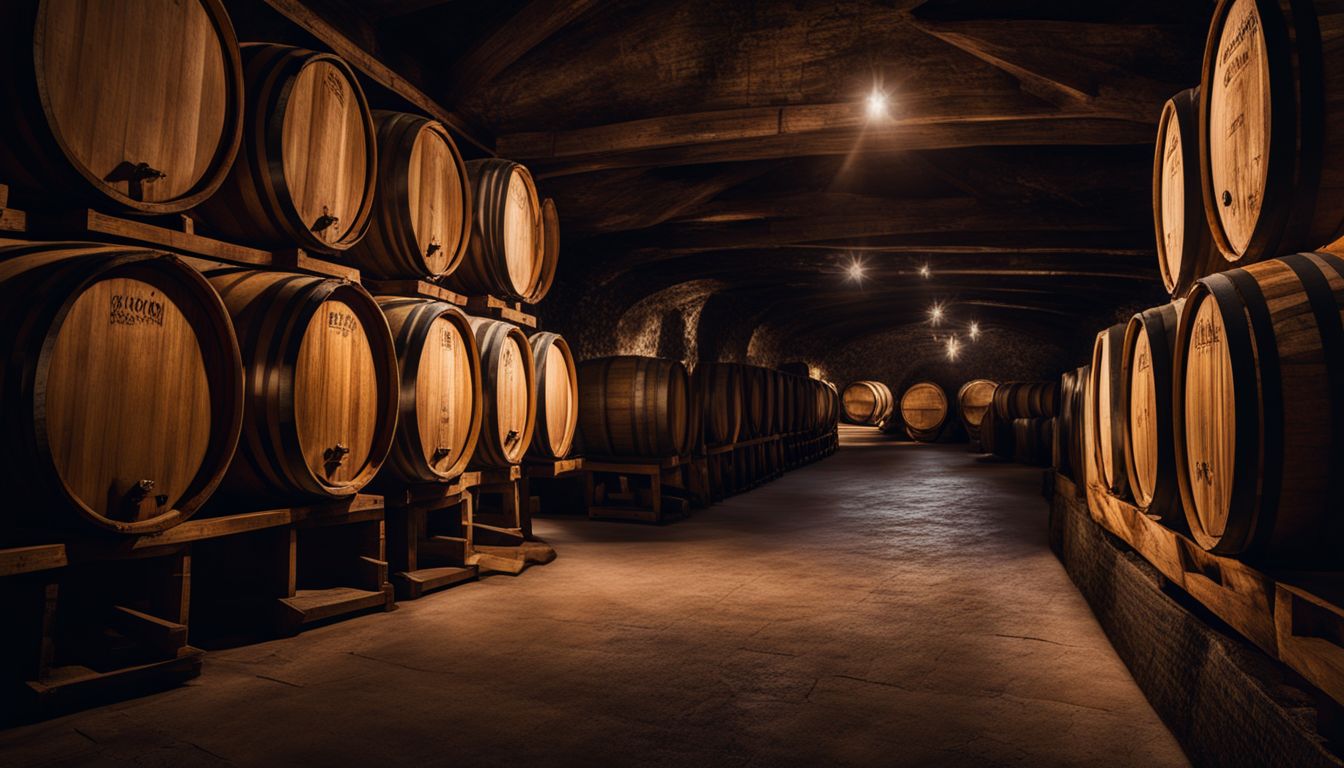
Barrel aging beer is a fascinating process that involves carefully selecting and preparing wooden barrels to impart unique flavors, aromas, and characteristics to the brew. Here’s how it works:
- Choose the right barrel: Brewers select barrels made from oak wood for their ability to enhance the beer’s flavor profile. Oak is preferred due to its porous nature, allowing the beer to interact with the wood and develop complex flavors.
- Preparing the barrel: Before using a barrel, brewers must ensure it is properly cleaned and sanitized to prevent any unwanted bacteria or off-flavors from affecting the beer. This step is crucial in maintaining the quality of the final product.
- Filling the barrel: Once cleaned, the barrel is filled with beer that has completed primary fermentation. The beer is transferred into the barrel, where it will undergo further aging and maturation.
- Aging process: The beer inside the barrel undergoes a slow transformation as it interacts with the wood. During this time, various chemical reactions take place, resulting in flavor development and complexity.
- Flavor infusion: The porous nature of oak allows flavors from previous contents, such as spirits or wines, to be infused into the beer. This can create intriguing flavor combinations and add depth to the brew.
- Time and patience: Barrel aging takes time – often several months or even years – for optimal results. Throughout this period, brewers carefully monitor and taste-test their creations to determine when they have reached their desired flavor profile.
- Blending possibilities: Brewers may also choose to blend multiple barrels together during or after aging to achieve a harmonious balance of flavors before bottling or kegging.
- Unique characteristics: Each barrel-aged beer has its own distinct characteristics based on factors such as oak type, previous contents of the barrel, time spent aging, and blending techniques employed by brewers.
Different types of beer aging barrels
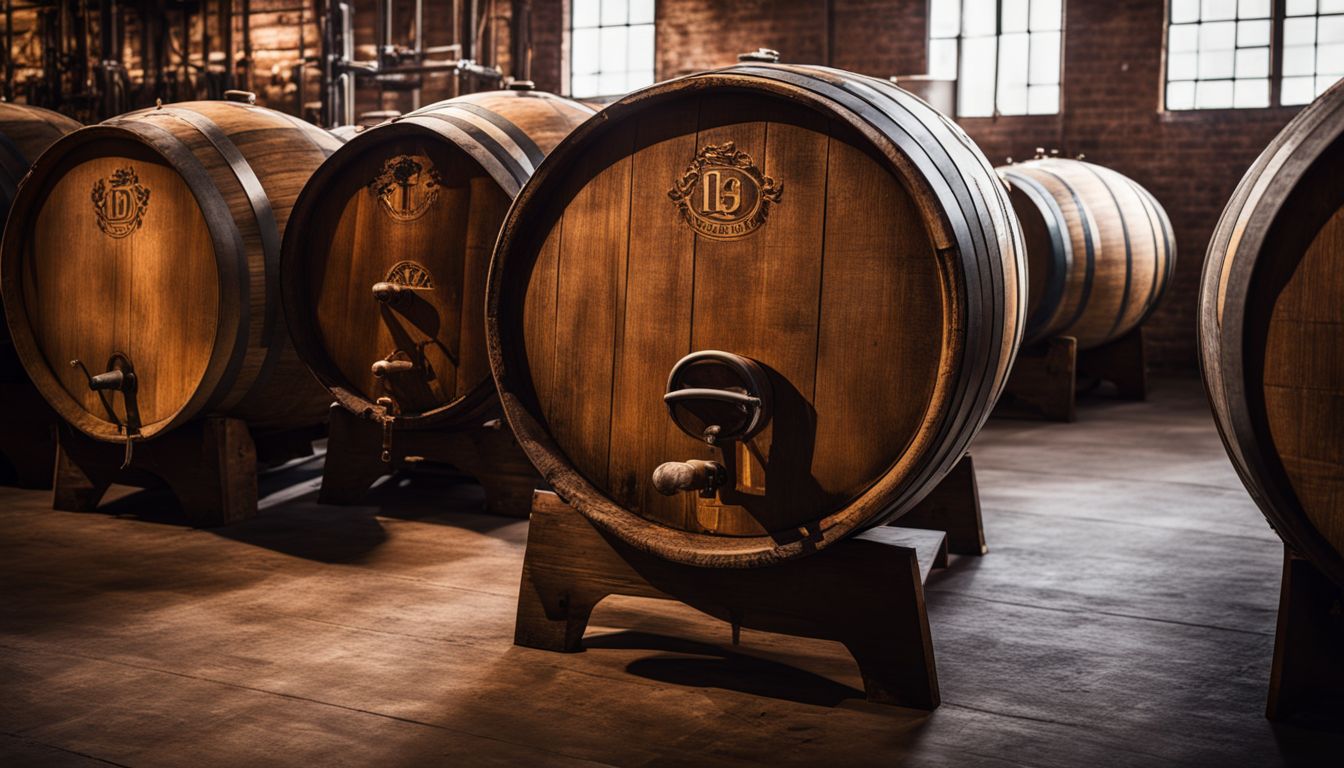
Beer aging barrels come in different types, each adding its own unique flavors and characteristics to the brew. Here are some of the commonly used types:
- Oak Barrels: Oak is the most popular type of wood used for beer aging barrels. It imparts flavors like vanilla, coconut, and spice to the beer.
- Whiskey Barrels: These barrels have previously held whiskey, giving the beer a hint of smoky and spirit-like notes.
- Wine Barrels: Aging beer in wine barrels infuses fruity and complex flavors into the brew, such as grape or berry undertones.
- Rum Barrels: Beer aged in rum barrels absorbs sweet and rich flavors from the residual rum that was once stored inside.
- Tequila Barrels: Tequila barrels give beer a unique twist with earthy and agave-like flavors.
- Sherry Barrels: Aging beer in sherry barrels can result in nutty and caramelized flavors.
- Bourbon Barrels: Bourbon barrels are known for imparting strong vanilla and caramel notes to the beer.
- Fruitwood Barrels: These barrels are made from fruit trees like cherry or apple, adding fruity undertones to the brew.
Toasted vs charred barrel
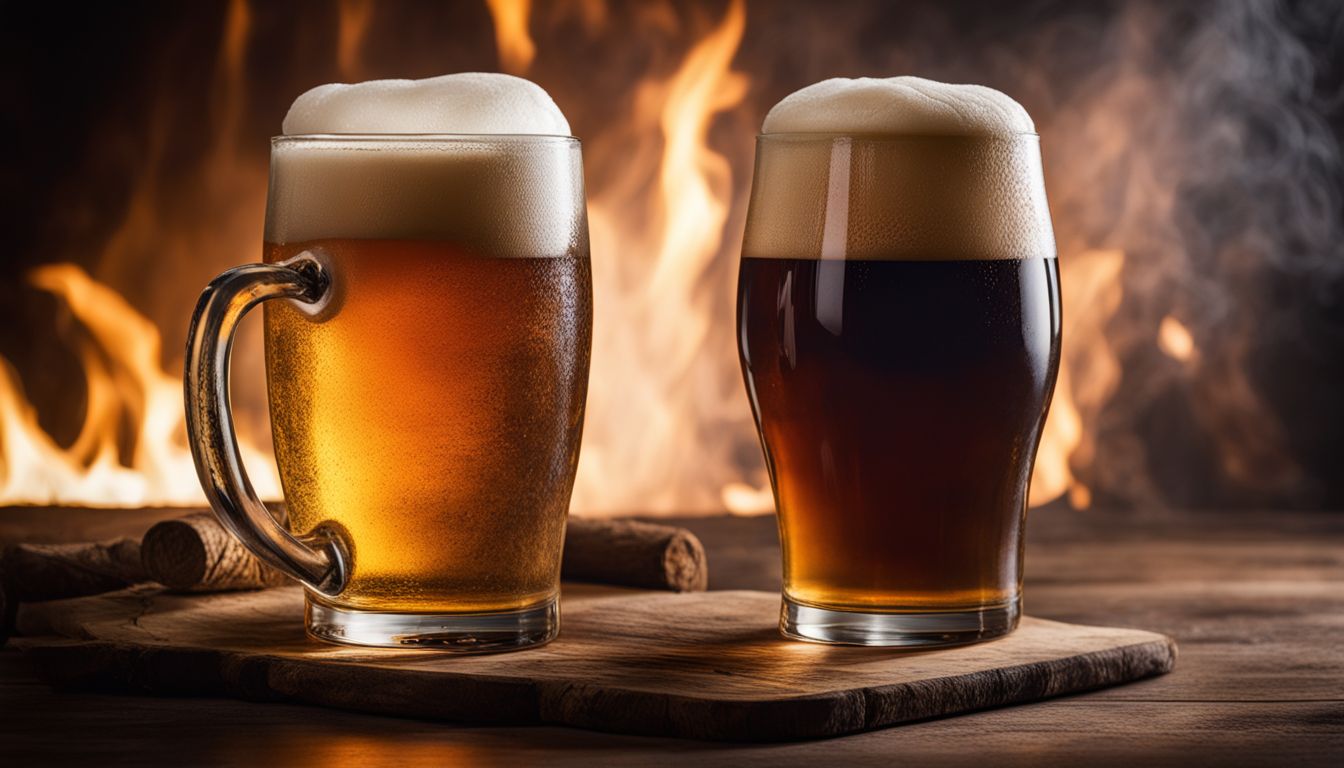
The distinction between toasted and charred barrels plays a significant role in the aging process of beer and the subsequent flavour profiles it develops. Each type of barrel imparts unique characteristics to the beer.
| Toasted Barrels | Charred Barrels |
|---|---|
| These barrels are heated to a lower temperature than charred barrels. This slow and controlled toasting process enhances the sweetness of the barrel’s wood sugars, imparts a caramelized flavour, and creates a smoother, more mellow brew. This is much like the aging process of whisky. | Charred barrels are exposed to high heat for a short time, causing the interior to catch fire and char. This process creates a layer of charcoal, which acts as a filter, removing impurities and adding complexity to the brew. Charred barrels are often credited with giving whisky its smooth experience and can do the same for beer. |
| Toasting barrels is a technique rooted in Celtic history, and it’s still used today in the global brewing industry due to the unique characteristics it imparts to the beer. | Charred barrels are not only used in whiskey production but also in brewing to add diverse aromas, flavours, and characteristics to the beer. It provides a rich smokiness and deep colour. |
| Toasted barrels can provide beer with a range of flavours, from toasted bread and nuts to toffee and vanilla. | Beers aged in charred barrels can take on a wide variety of flavours, from sweet caramel and vanilla to spicy notes and complex smoky undertones. |
Specialty Techniques: Solera Brewing
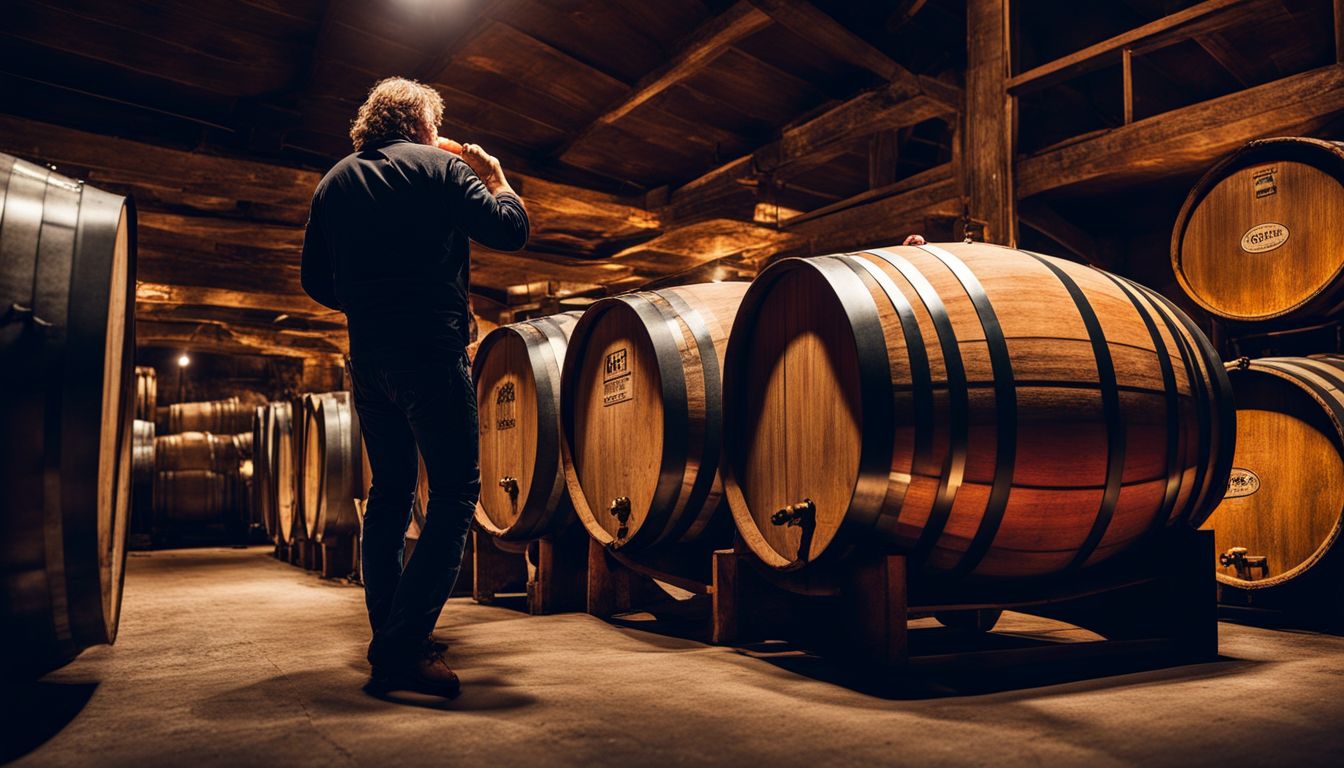
Understanding the artistry involved in blending aged barrels, Solera brewing combines various vintages to create unique and complex flavors in barrel-aged beers.
Understanding the Solera brewing technique

The Solera brewing technique is a unique method of aging beer that involves blending different batches over time. It originated in the wine-making industry and has been adapted for beer production.
In this process, a portion of the oldest batch is removed from the barrel and replaced with a younger one. This creates a continuous cycle where the flavors and characteristics of each batch blend together over time.
The result is a complex and well-balanced beer with layers of flavors. The Solera brewing technique requires patience and skill to achieve desired results, making it an art form in itself within the world of craft brewing.
The artistry involved in blending aged barrels
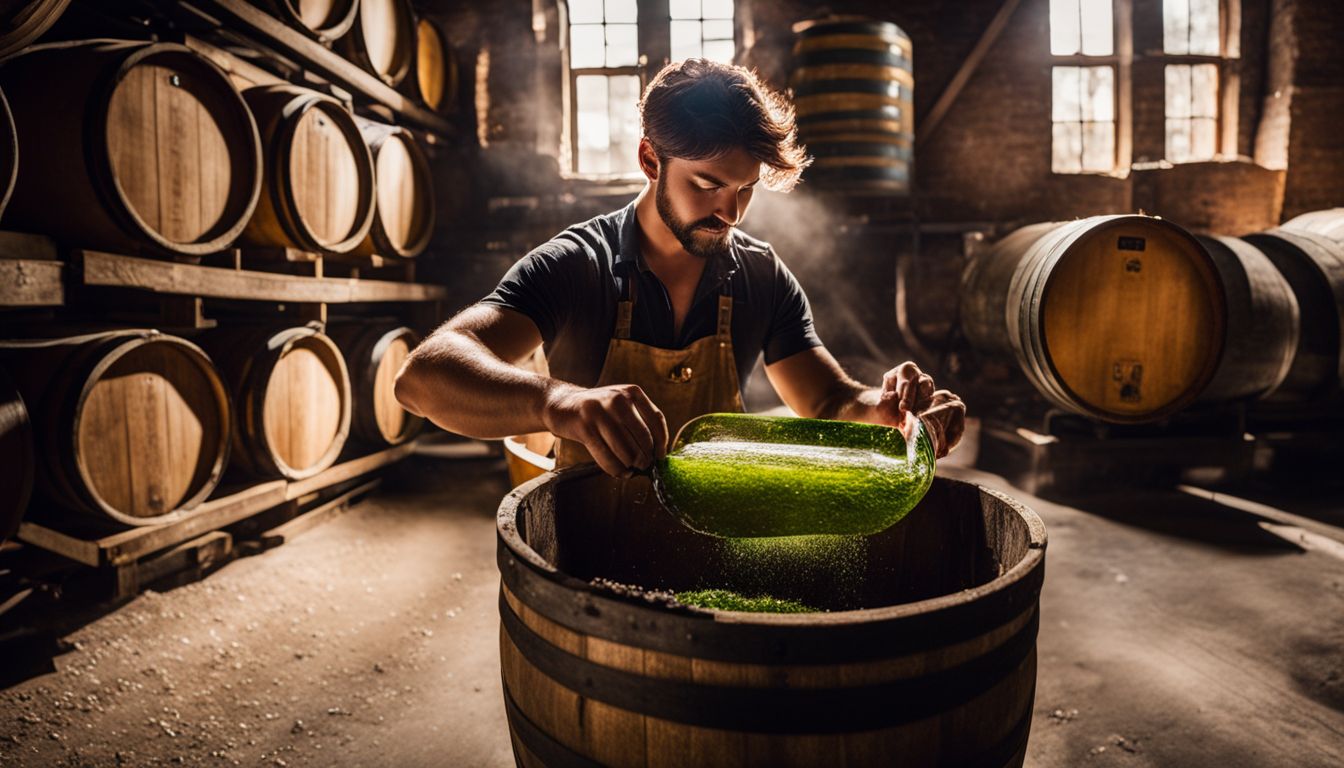
Blending aged barrels is a true art form in the world of brewing. It requires skill and precision to create a harmonious balance of flavors and aromas. Brewers carefully select different barrels that have been aging their beer for varying lengths of time, each imparting unique characteristics to the brew.
They then masterfully blend these aged beers together, creating complex flavors that are greater than the sum of their parts.
It’s not just about mixing different beers together; it’s about understanding how each barrel contributes to the final product. The flavors from one barrel may be rich and oaky, while another may add notes of vanilla or spice.
By blending these barrels together, brewers can create a beer with layers upon layers of complexity.
The artistry lies in knowing which barrels to select and how much of each beer to use in the blend. It’s a delicate dance between science and creativity, as brewers experiment with different combinations to achieve their desired flavor profile.
The result is an exquisite brew that showcases both the craftsmanship of barrel aging and the artistic vision of the brewer.
Unique characteristics of Solera-aged beers
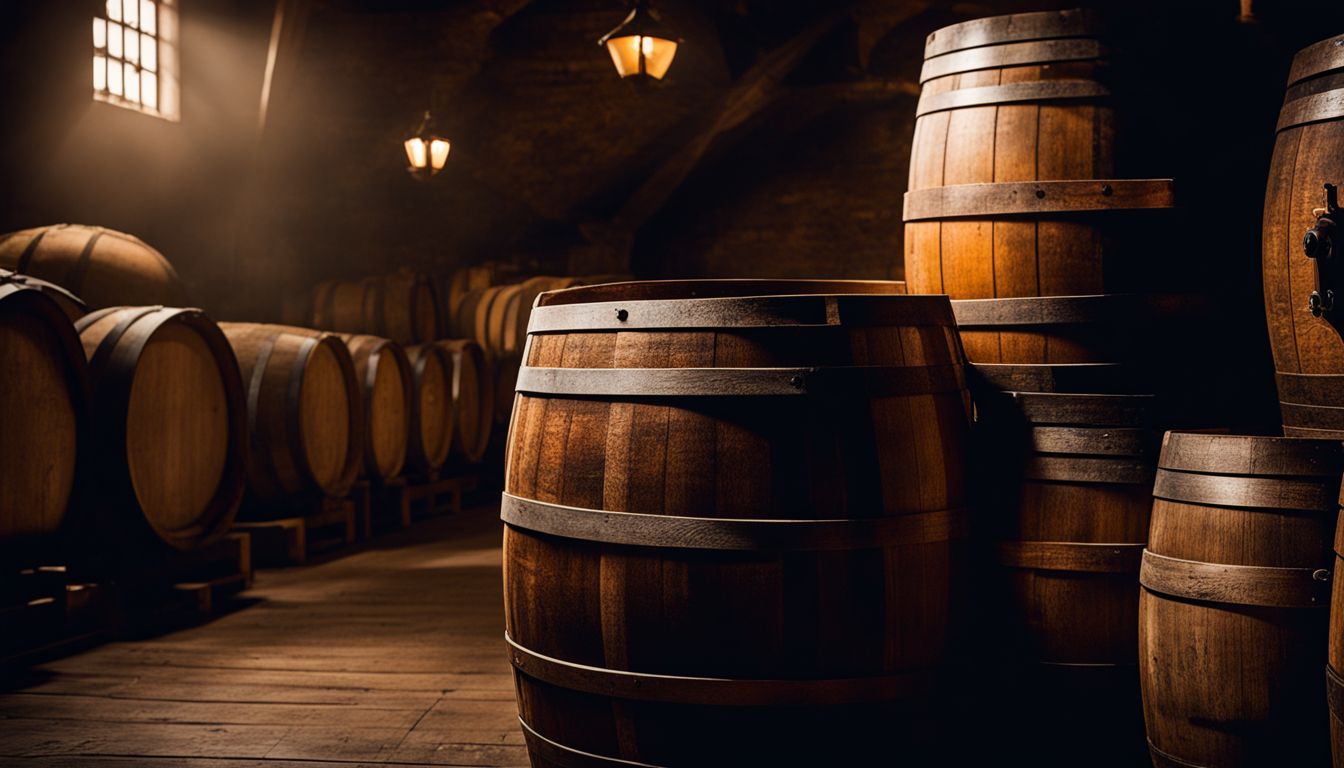
Solera-aged beers have some unique characteristics that make them stand out from other types of barrel-aged beers. One of the key features is the artistry involved in blending aged barrels.
Brewers carefully select different barrels of varying ages and flavors, then mix them together to create a harmonious and complex final product. This blending process allows for a more balanced and nuanced flavor profile in the beer.
Another distinctive aspect of Solera-aged beers is their depth and complexity. Over time, as beer is continuously transferred from older to newer barrels in a cascading fashion, it develops layers of flavor that can range from rich caramel and vanilla notes to subtle hints of smoke, spice, fruit, or even coconut.
The result is a truly unique beer with multiple dimensions of taste and aroma.
Solera aging also imparts a certain smoothness and elegance to the beer. As it spends time in oak barrels, flavors infuse into the liquid through chemical reactions between wood compounds and compounds present in the beer itself.
This process leads to a more rounded mouthfeel and adds depth to the overall sensory experience.
The Transformative Effects of Barrel Aging
Barrel aging infuses beer with unique flavors, aromas, and characteristics as the wood imparts its influence through chemical reactions during the aging process.
How wood imparts flavors, aromas, and characteristics to beer

Wood plays a crucial role in giving beer unique flavors, aromas, and characteristics. When beer is aged in wooden barrels, the wood interacts with the brew, infusing it with distinct notes.
Oak is most commonly used because of its ability to add flavors like vanilla, coconut, and spice. The aging process allows the beer to absorb compounds from the wood, resulting in complex and rich flavors that can’t be replicated through other methods.
This technique has been used for centuries and continues to be popular among craft brewers looking to create specialty beers with a touch of oak-aged goodness.
The science behind aging techniques and flavor variations
Barrel aging is not just about the artistry, it also involves some scientific processes that affect the flavor of beer. When beer is aged in wooden barrels, chemical reactions happen between the wood and the liquid.
These reactions can release compounds like tannins, vanillin (which gives a vanilla flavor), lignin (which adds smoky characteristics), and other flavors from toasted or charred wood.
The longer the beer stays in the barrel, the more time it has to absorb these flavors and develop its unique taste. This science behind aging techniques explains why different barrels produce varying flavors and aromas in barrel-aged beers.
In addition to wood interactions, oxygenation plays a role in developing flavors during barrel aging. A controlled amount of oxygen enters through tiny pores in the oak barrels over time, which helps create smooth and complex flavors.
It’s important for brewers to carefully monitor this process to achieve desirable results.
The unique characteristics of each barrel-aged brew
Barrel-aged beers have unique characteristics that make them stand out from other brews. Each type of barrel used for aging, such as oak, whiskey, or wine barrels, imparts different flavors and aromas to the beer.
For example, oak barrels can add notes of vanilla and spice, while whiskey barrels give a hint of smoke and spirit. Wine barrels may contribute fruity or coconut undertones. These various barrel types create a range of complex flavors that develop during the aging process.
Whether you prefer a rich mocha flavor or a subtle fruitiness, there is a barrel-aged beer out there to suit your taste buds. So next time you’re at the brewery, why not try one and experience these unique characteristics for yourself?.
Conclusion
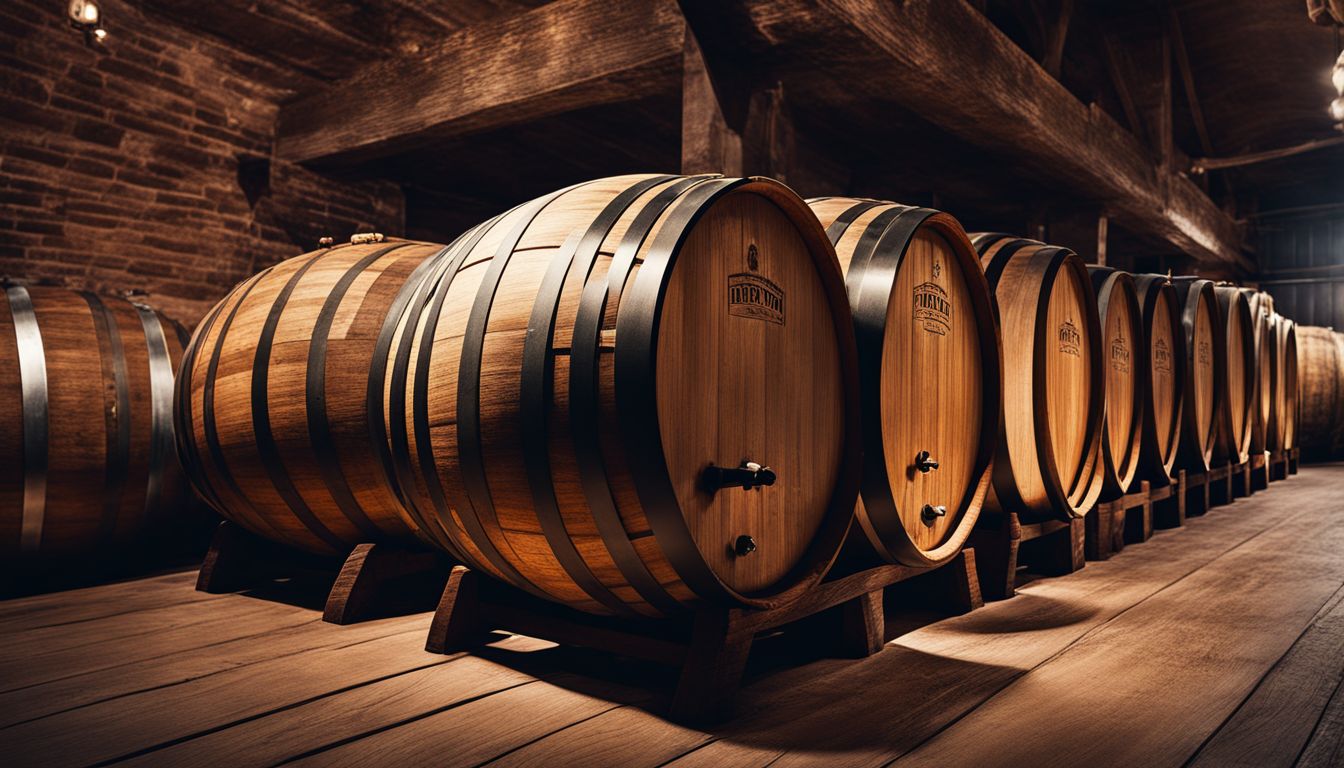
Barrel aging is a fascinating and intricate process in the world of brewing. It combines artistry and scientific precision to create unique flavors and aromas in beer. From choosing the right oak wood to mastering blending techniques, barrel aging adds complexity and depth to craft brews.
With its transformative effects, this specialty technique continues to push the boundaries of flavor innovation in the global brewing industry.
FAQs
1. What is barrel-aging in brewing?
Barrel-aging in brewing is the process of aging beer or other beverages in wooden barrels, which imparts unique flavors and characteristics to the liquid.
2. How long does it take to barrel-age beer?
The time it takes to barrel-age beer can vary depending on factors such as the type of beer, desired flavors, and the size of the barrels. It can range from a few months to several years.
3. What are some specialty techniques used in brewing?
Some specialty techniques used in brewing include dry hopping, souring with bacteria or wild yeasts, blending different beers together, and adding fruit or spices during fermentation.
4. Can I try barrel-aged beers at breweries?
Yes, many breweries offer barrel-aged beers for tasting and purchase. These beers often have complex flavors that come from the aging process and can provide a unique drinking experience for beer enthusiasts.
